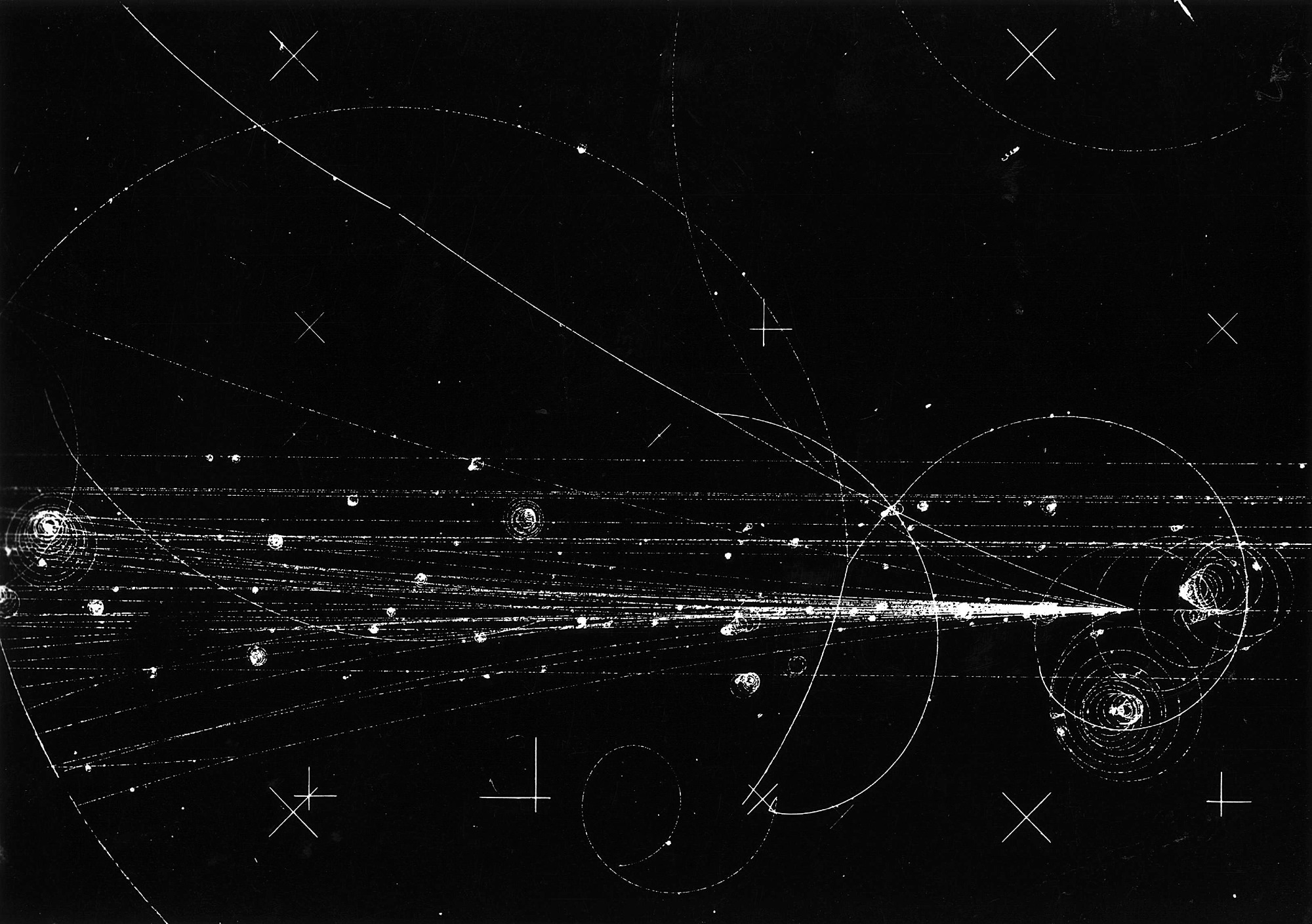Reviewed by Sarah KellyNov 4 2025
At RIKEN, scientists have successfully flipped the spin of a single antiproton using precision quantum spectroscopy, in a study that explores whether matter and antimatter are truly identical.
 A proton with 300 GeV energy producing 26 charged particles. Study: Coherent spectroscopy with a single antiproton spin. Image Credit: Rawpixel.com/Shutterstock
A proton with 300 GeV energy producing 26 charged particles. Study: Coherent spectroscopy with a single antiproton spin. Image Credit: Rawpixel.com/Shutterstock
Detecting even the slightest variation between a proton and its antimatter counterpart, the antiproton, could challenge the foundations of one of modern physics’ most successful theories. This is precisely the goal of a team at CERN, led by Stefan Ulmer from the RIKEN Ulmer Fundamental Symmetries Laboratory. Their findings were published in Nature.
The principle of charge–parity–time (CPT) invariance forms a cornerstone of quantum field theory. It states that an antimatter particle should have the same properties as its matter counterpart, except for an opposite charge. Accordingly, an antiproton should be identical to a proton in every way – except that it carries a negative charge.
Protons are abundant, constituting roughly half the visible mass of everything. Antiprotons, however, are exceedingly rare and are therefore generated in large particle accelerators by scientists.
This vast imbalance between matter and antimatter remains one of the greatest mysteries in modern physics, as the Big Bang is thought to have created equal quantities of both.
One possible explanation is that matter and antimatter are not as identical as once thought, and possess minuscule differences in their properties, which could result in the dominance of matter today. However, this notion would require abandoning CPT invariance, an idea that would pose enormous challenges for theorists.
If CPT is violated, we’d have to rethink our understanding of causality, the architecture of space–time, or the concept of unitarity in quantum mechanics – all very fundamental principles.
Stefan Ulmer, RIKEN
Ulmer’s team is measuring antiproton properties with ever-increasing accuracy in an attempt to detect any small differences from protons.
In their latest work, they successfully applied a quantum spectroscopic technique to individual antiprotons confined in a Penning trap. Using this method, they coherently flipped the spin of a single antiproton between its up and down states multiple times, in a phase-evolution time for nearly a full minute.
This demonstration showed that coherent spectroscopy can be used to measure the magnetic moment of an antiproton with much greater potential accuracy than previously possible, enabling more stringent comparisons with protons. Ulmer stated that the experiment was incredibly difficult to perform.
It’s probably one of the most difficult experiments ever done in a Penning trap. It was extremely challenging because the magnetic moment of the antiproton is so small.
Stefan Ulmer, RIKEN
The team’s long-term objective is to carry out the same measurement in a laboratory located away from CERN, to avoid the strong magnetic fields produced by the antiproton decelerator facility, which currently limit measurement accuracy.
Journal Reference:
Latacz, B. M., et al. (2025) Coherent spectroscopy with a single antiproton spin. Nature. doi.org/10.1038/s41586-025-09323-1.